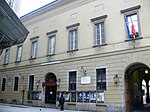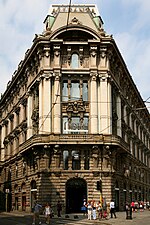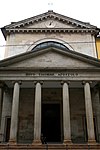Via Dante

Via Dante today is a pedestrian street in central Milan, Italy, connecting Piazzale Cordusio (and the Cordusio metro station) with Largo Cairoli (Cairoli metro station). It is near to the city's Castello Sforzesco and is named after the Florentine poet Dante Alighieri. It is known for its theatres, shops, restaurants, cafés, bars, and palazzi ― townhouses or „palaces“, elegant city residences of nobles and wealthy citizens (cognate with french term palais, see also palazzo (disambiguation)). The street has numerous fine buildings, mainly from the 18th and 19th centuries. Notable ones include the city's Piccolo Teatro (literally "small theatre"). Up until 1958, the street contained several transport links as well as a tramway line. In 1996 it was converted to a fully pedestrianised area, the Milan Metro can be accessed through stations nearby.
Excerpt from the Wikipedia article Via Dante (License: CC BY-SA 3.0, Authors, Images).Via Dante
Via Dante, Milan Municipio 1
Geographical coordinates (GPS) Address Nearby Places Show on map
Geographical coordinates (GPS)
| Latitude | Longitude |
|---|---|
| N 45.467 ° | E 9.18388 ° |
Address
Gutteridge
Via Dante 12
20123 Milan, Municipio 1
Lombardy, Italy
Open on Google Maps











